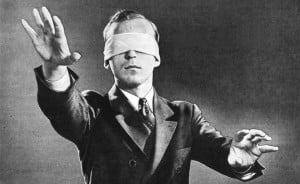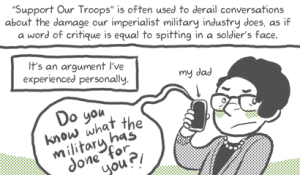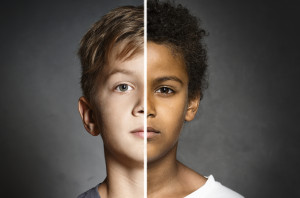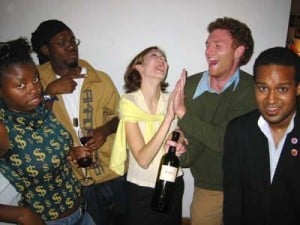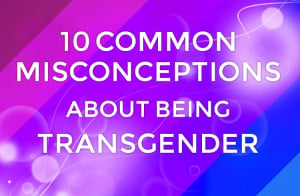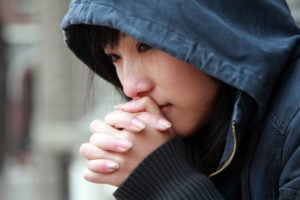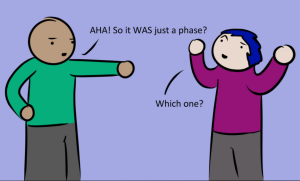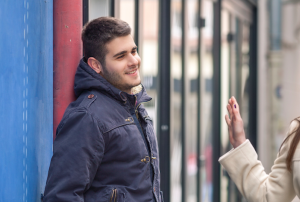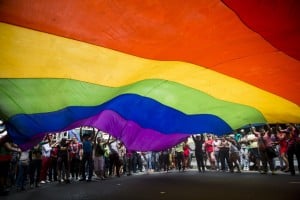
Source: Slate
While organizations across the country cite Stonewall as the beginning of the gay liberation movement, the abolition work that began those riots has largely been forgotten.
Marriage equality activists – and the rest of the neoliberal gay community – fails to remember that Stonewall made its mark on our history through the blood of anti-police struggles.
Bricks were picked up not to build happy assimilated gayborhoods, but to toss at the police that had, for so long, been violently targeting the queer and trans communities.
Many Gay Rights Movement™ folks and their allies forget that we are no less plagued by police violence as a community today then we were during Stonewall.
However, since many of those people inhabit other privileged identities (white, cis, wealthy, able-bodied), they have been able to distance themselves from this tragic reality.
It seems that actions, such as hate violence legislation, that call upon the police for “protection” are becoming more and more common amongst mainstream Gay Rights™ rhetoric.
Hate violence legislation and acts to “clean up” new shiny gayborhoods leave many queers wondering, Have you forgotten your own history?
Since the beginning of imperial colonization, policing gender and sexuality has been a major focus of white supremacist heteropatriarchy.
This systemic violence against queer and gender non-conforming folks (particularly those who are femme QTPOC) has stretched to the day you are reading this article (six black trans women were murdered within the first couple weeks of 2015).
So, why is it that so many LG(BT) – an acronym used specifically to point out the ways in which the mainstream Gay Rights™ movement leaves out everyone except lesbian and gay folk – folks have left behind a gay liberation that addresses police as a main source of queerphobic and transphobic (specifically transmisogynistic) violence?
The answer lies within a neoliberal gay agenda that looks only to push for the surplus rights of those who already have immense amounts of privilege within the queer “community” (white, cis, masculine, able-bodied, wealthy, and so on).
To combat the newly formed Gay Rights™ rhetoric of “helpful,” “safe” police officers, I think it would greatly benefit those who believe such heinous lies to be re-introduced to the history of gay liberation and the actions that made their big gay wedding possible.
Body Policing and Policed Bodies
Clothing, throughout history (and not such distant history), has been a way to create visible signifiers between certain classes of people. Sumptuary laws, although not limited to attire, used the legal system to uphold the policing of these signifiers.
The one that has affected the queer and trans community the most, however, would be the “three or more items of gender appropriate clothing” legislation.
Although this type of policing seems archaic, we can see this still playing out all over the country, most visibly in schools policing the expressions of trans and gender non-conforming students.
The “three article of clothing” laws brought home and still brings home the reality that the Prison Industrial Complex (PIC) is not just prisons, court houses, and county jails, but “a set of relations”(Captive Genders).
These sets of relations play out in many different ways in the present queerphobic and transphobic culture of the US. It’s a culture that has taught us that bodies have immovable genders attached to them, that colors have immovable genders attached to them, and that clothes have immovable genders attached to them.
Our culture of surveillance and peer policing has taught us that when we see bodies in clothing and colors that have been deemed “contradictory” to those immovable genders, that we have the right to step in and police those bodies.
If peers are given the right to police, then those whose literal jobs it is to “police” are given even more permission to violate these types of bodies – and police have the entire PIC to back them up.
It was the people inhabiting these policed bodies that “kicked off” “modern gay liberation.”
Gay Rights™ organizations, like the Human Rights Campaign (and their legion of gay marriage zombies), are quick to cite the Stonewall Riots (1969) as the beginning of Gay Rights. However, they are less hasty to remember who it was that threw the first stones, and why they were throwing them.
As the book Captive Gender shows, on the front line of the front line stood “trans/gender non-conforming folks, queers of color, butches, drag queens, hair fairies, homeless street youth, [and] sex workers.”
These were the people hurrying into bathrooms during police raids to change into “gender appropriate clothing,” who were dragged into cop cars, beaten on the street, killed by cops.
These were the people who knew who the true enemies were. In the words of Sylvia Rivera, “We have always felt that the police were the real enemy.”
So, over 50 years later, have we created a movement that aims to finish what really began at Stonewall?
March 2003, almost 40 years after the Stonewall Riots, the Power Plant, a queer club in Detroit, was raided by police.
Under the guise of “enforcing liquor licenses” (one of the same excuses used by police during the Stonewall era raids), police officers barged into a gay bar, arresting over 300 people, ticketing all cars in the area, and leaving marginalized communities – once again – at the hands of violent police officers.
Unlike the political climate of the 60s and 70s, the mainstream Gay Rights Movement™ is hesitant, if not completely unwilling, to use these violent police raids as a connection between queer and gender non-conforming bodies and the PIC – so unwilling, in fact, that I could not find a single article reporting on this event.
This raid is a violent reminder that, while mainstream Gay Rights™ rhetoric loves to cite Stonewall as a beginning to gay liberation, it does not love to recognize the police violence still ravaging major parts of the LGBTQIA+ community.
‘Pull Yourself Up by Your Bootstraps!’
Although raids on queer spaces still happen, it’s true that these raids are not as common or “tolerated” as they once were. What is still alive and well is the individual policing of gender non-conforming bodies, particularly if those bodies are black or brown.
The New Jersey Four refers to a group of black, gender non-conforming lesbians who were harassed and attacked while walking together.
Their attacker had zeroed in on the group specifically because of their race, perceived sexuality, and gender presentation. They were jailed for defending themselves against their attackers.
CeCe McDonald is a black trans woman attacked by a neo-nazi while walking with a friend. She was attacked specifically because of her race and gender presentation and jailed for defending herself.
Islan Nettles, a black trans woman, and her friends were approached by a group of young men, then harassed and beaten when they became aware that she was trans.
She incurred a concussion and died in the hospital four days later. This all happened directly in front of a police station, although no legal action has been taken against her attackers.
A trans feminine young girl in New Orleans was threatened with contempt in court for appearing in what was considered “gender inappropriate clothing.”
Another Lousianna youth in prison stated of the police that “I’m afraid they’re rounding up homosexuals.”
The 2000 NCAVP states that 50% of bias related violence reported by trans women in San Francisco was committed by police.
The 2003 NCAVP states that 1-in-4 trans folks have been harassed by the police.
The 2008 NCAVP states that police were the third largest perpetrators of queerphobic violence.
Why, with information and statistics like that, do Gay Rights™ activists pull away from abolition work and even go as far as to seek protection and safety from the police? Why, with stats like that, does a parade meant to honor those who fought at Stonewall require a heavy police presence?
Well, when the most privileged in the community have little to no experience with queer and transphobic police violence, it’s easy to dismiss it as something to do with the individual and not the community.
One’s participation in survival crimes (like sex work and selling drugs), drug use, and clothing are used to push the police violence away from the “community” and onto the individual (regardless of the fact that one’s gender, race, and sexuality play huge roles in ones need to participate in survival crimes and drug use).
The mainstream Gay Rights™ movement loves to distance itself from its most marginalized communities, and in doing so, has distanced itself from the realities of queerphobic and transphobic police violence.
“Our entire movement started from fighting police violence, and we’re still fighting police violence. In many ways, it’s gotten worse,” says Imani Henry of TransJustice.
Although the PIC is more than just prison buildings and courthouses, those spaces are heavily gendered and heavily policed (and therefore major sites of violence).
The first way in which this violence plays out is in the gendered nature of prison facilities and the inability of the PIC to place incarcerated trans folks into facilities of their true gender, and lack of space for folks who do not so neatly fit into the gender binary.
This results in trans women being placed in men’s facilities.
Kim Love – of the Trans, Gender Variant, Intersex, Justice Project – speaks of her experiences as a trans feminine person in male prisons in the beautifully written piece “No One Enters Like Them” from Captive Genders.
What Love lays out is this:
“The guise of ‘protection; is used to place queer and trans folks in solitary confinement for extended periods of time.”
Trans women are used as bargaining chips between prison guards and male inmates. These women are “given” to particularly violent men in order to use sex (rape) to quell tensions between inmates and guards.
This “giving away” of trans women is used to threaten those women in the event that they try and report abuse from other inmates or guards.
These women are often put in this situation close to the end of their sentence, so that fighting back would be deterred because it would extend their sentence.
Health care priority is determined by how much inmates are capable of paying. Keep in mind that many trans women who are incarcerated have been arrested for survival crimes, crimes committed because they were unable to find steady employment elsewhere.
Love states that, “It is a prison industrial complex norm to use women’s bodies in unsafe ways to pacify male inmates.”
This “unsafe use” of women’s bodies is also coupled with many prisons announcing HIV test results publicly, deterring many incarcerated folk from getting tested.
“The Prison System is a money maker and nothing is going to change that,” says Kim Love.
While the most privileged of us are out there fighting for marriage equality, the most marginalized are fighting for their lives.
These queer, trans, and gender non-conforming bodies are being used to further profit the Prison Industrial Complex, and no amount of gay weddings or gay soldiers will stop that from happening.
The true beginning of gay liberation was not a bar fight, it was the knowledge that police violence was being directed at members of our community.
Just because folks like me (white, middle class, trans masculine) are not being swept up in police raids does not mean police brutality is over, so I urge you not to distance your politics from those at the most risk.
Remember queer history, remember the victims of police violence, and breathe new life into the real beginning of gay liberation: prison abolition.
[do_widget id=”text-101″]
Kris Nelson (they/them) is a queer trans witch with a BA in Gender, Sexuality, and Women’s Studies. They are currently on their way to LA to continue their life of patchmaking, spellcrafting, radical organizing, and spoken word. Kris runs a blog full of short queer-centric radical prose, which can be found at thequeertimes.tumblr.com and a poetry blog that can be found at songswithoutlyrics.tumblr.com. They can be contacted at [email protected] and trans-witch.tumblr.com.
Search our 3000+ articles!
Read our articles about:
Our online racial justice training
Used by hundreds of universities, non-profits, and businesses.
Click to learn more





